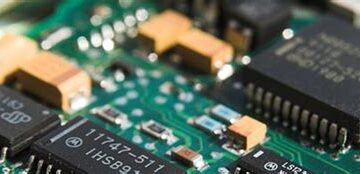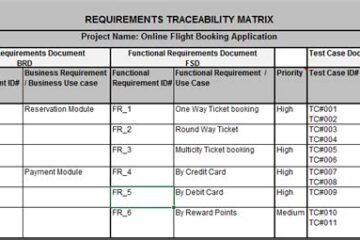What are PCB Net Ties and Why Are They Important?
PCB net ties, also known as net stitching or plane stitching, is a technique used in printed circuit board (PCB) design to connect power and ground planes together at strategic locations. This is done by placing small copper connections, or “stitches,” between the planes.
The main purposes of using PCB net ties are:
- Reducing electromagnetic interference (EMI) and radio frequency interference (RFI)
- Improving signal integrity and reducing crosstalk
- Equalizing voltage potential differences between planes
- Providing low-impedance return paths for high-speed signals
In today’s high-speed, high-density PCB designs, net ties have become an essential tool for meeting stringent performance requirements. They help ensure that the PCB functions reliably and meets electromagnetic compatibility (EMC) standards.
How PCB Net Ties Work
PCB net ties work by creating a low-impedance connection between power and ground planes at specific points on the board. This helps to equalize any voltage potential differences that may exist between the planes, which can cause issues like ground bounce, EMI, and signal integrity problems.
When a high-speed signal transitions from one layer to another through a via, it seeks the path of least impedance to return to its source. In the absence of net ties, this return path can be unpredictable and may cause the signal to radiate EMI or couple with other signals, leading to crosstalk.
By placing net ties near vias and other critical areas, designers can provide a controlled, low-impedance return path for high-speed signals. This helps to minimize loop areas, reduce EMI, and maintain signal integrity.
Implementing PCB Net Ties in Your Design
To effectively implement PCB net ties in your design, consider the following guidelines:
-
Placement: Place net ties near vias, especially those carrying high-speed signals. Also, place them along the edges of the board and near connectors to provide a low-impedance path for any external noise.
-
Spacing: The spacing between net ties depends on factors such as the frequency of the signals, the dielectric constant of the PCB material, and the thickness of the board. As a general rule, the spacing should be less than 1/20th of the wavelength of the highest frequency signal on the board.
-
Size: The size of the net ties should be as small as possible while still providing a low-impedance connection. Typical sizes range from 10 to 50 mils (0.25 to 1.27 mm).
-
Quantity: The number of net ties required depends on the size and complexity of the board. More net ties may be needed in areas with high via density or near high-speed interfaces.
-
Layering: Place net ties on all layers of the board, including power and ground planes. This helps to create a more uniform voltage reference throughout the board.
Here’s an example of how you might place net ties in a typical 4-layer PCB stackup:
| Layer | Purpose | Net Tie Placement |
|---|---|---|
| Top | Signal | Near vias and along edges |
| GND | Ground plane | Evenly spaced throughout |
| PWR | Power plane | Evenly spaced throughout |
| Bottom | Signal | Near vias and along edges |

Benefits of Using PCB Net Ties
Implementing PCB net ties in your design offers several key benefits:
-
Reduced EMI: By providing low-impedance return paths for high-speed signals, net ties help to minimize the loop area and reduce EMI radiation.
-
Improved signal integrity: Net ties help to maintain a stable voltage reference between power and ground planes, reducing ground bounce and other signal integrity issues.
-
Reduced crosstalk: By controlling the return path of high-speed signals, net ties help to minimize coupling between adjacent signals, reducing crosstalk.
-
Enhanced EMC compliance: Proper use of net ties can help your design meet strict EMC requirements, such as those outlined in the FCC Part 15 and EU EMC Directive standards.
-
Increased reliability: By minimizing EMI and signal integrity issues, net ties contribute to the overall reliability and long-term performance of the PCB.
Common Mistakes to Avoid When Using PCB Net Ties
While net ties are a powerful tool for improving PCB performance, there are some common mistakes to avoid:
-
Overusing net ties: Placing too many net ties can actually increase EMI by creating unintended antenna structures. Use them judiciously and only where needed.
-
Placing net ties too close to sensitive signals: Avoid placing net ties too close to sensitive analog or RF signals, as this can cause unintended coupling and degrade signal quality.
-
Ignoring other EMI reduction techniques: Net ties should be used in conjunction with other EMI reduction techniques, such as proper grounding, shielding, and filtering. They are not a substitute for good PCB design practices.
-
Neglecting simulation and analysis: Before finalizing your net tie placement, it’s important to perform signal integrity simulations and EMI analysis to ensure that they are effective and not causing any unintended issues.
Real-World Examples of PCB Net Tie Implementation
To illustrate the practical application of PCB net ties, let’s look at a few real-world examples:
-
High-speed digital interface: In a PCB design featuring a USB 3.0 interface, net ties were placed near the differential pairs and along the edges of the board. This helped to reduce EMI and maintain signal integrity, ensuring reliable operation at high data rates.
-
Mixed-signal design: In a mixed-signal PCB containing both analog and digital circuits, net ties were used to isolate the analog section from digital noise. They were placed strategically to create a low-impedance barrier between the two sections, minimizing crosstalk and preserving signal quality.
-
Automotive electronics: In an automotive ECU design subject to stringent EMC requirements, net ties were used extensively throughout the board. They were placed near connectors, vias, and critical components to minimize EMI and ensure reliable operation in a harsh environment.
FAQ
-
Q: What is the difference between net ties and stitching capacitors?
A: Net ties are copper connections between power and ground planes, while stitching capacitors are discrete components placed between the planes. Both serve to reduce EMI and improve signal integrity, but net ties are generally preferred for their simplicity and lower cost. -
Q: Can net ties be used in multi-layer PCBs?
A: Yes, net ties can and should be used in multi-layer PCBs. They are typically placed on all layers, including power and ground planes, to create a uniform voltage reference throughout the board. -
Q: How do you determine the optimal spacing for net ties?
A: The optimal spacing for net ties depends on several factors, including the frequency of the signals, the dielectric constant of the PCB material, and the thickness of the board. As a general rule, the spacing should be less than 1/20th of the wavelength of the highest frequency signal on the board. Simulation and analysis tools can help determine the best spacing for a given design. -
Q: Can net ties be used in RF PCBs?
A: Yes, net ties can be used in RF PCBs, but they must be used carefully to avoid unintended coupling and signal degradation. In general, net ties should be placed away from sensitive RF traces and components, and their effectiveness should be verified through simulation and testing. -
Q: Are there any downsides to using net ties?
A: While net ties are generally beneficial, there are some potential downsides to consider. Overusing net ties can create unintended antenna structures that actually increase EMI. Additionally, placing net ties too close to sensitive signals can cause unwanted coupling and degrade signal quality. As with any PCB design technique, net ties should be used judiciously and in conjunction with other best practices.
Conclusion
PCB net ties are a valuable tool for meeting the demanding requirements of modern, high-speed PCB designs. By providing low-impedance connections between power and ground planes, net ties help to reduce EMI, improve signal integrity, and minimize crosstalk.
To effectively implement net ties in your design, consider their placement, spacing, size, quantity, and layering. Use them judiciously and in conjunction with other EMI reduction techniques, and always verify their effectiveness through simulation and analysis.
By following best practices and avoiding common mistakes, you can harness the power of PCB net ties to create reliable, high-performance electronic devices that meet even the most stringent requirements.



0 Comments